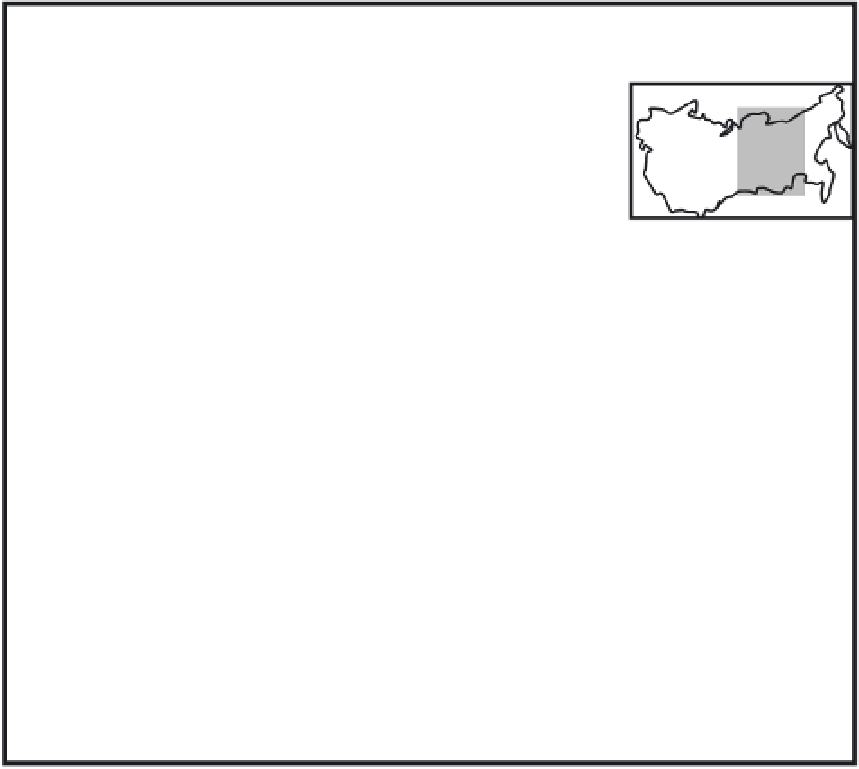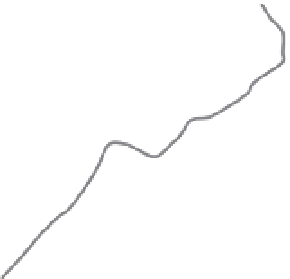Geoscience Reference
In-Depth Information
80
o
E
140
o
E
Laptev Sea
Ta i m yr
Fold Belt
Russia
70
o
N
Anabar
Norilsk
Verkhoyansk
Fold Belt
Udachnaya
Yakutsk
Aldan
Baikal
Fold Belt
Kimberlite fields
Archaean shields
Fig. 1. Map of the Siberian Platform showing the major kimberlite fields after Pearson et al.
(1995).
et al., 1976). At deeper levels (> 400 m) of the kimberlite body the amount of serpentine in
the groundmass gradually decreases and the amount of carbonate in the groundmass
increases. Intensive mining of the Udachnaya pipe revealed widespread chloride minerals
(mostly halite) as dispersed masses in the groundmass and massive multi-mineral
segregations of halite, serpentine, anhydrite, carbonates and hydrous iron oxides (Pavlov &
Ilupin, 1973). The amount of chloride minerals in the groundmass increases with depth, and
recently a large number of chloride-carbonate “nodules” were recovered from ~470-500 m
depths of the mine.
The studies Udachnaya-East kimberlites are dark massive rocks with porphyroclastic
fragmental textures. They are exceptionally olivine-rich (Fig. 2, 12a), a feature shared by the
majority of known kimberlites, excluding rare aphanitic kimberlites, such as those from
Kimberley, South Africa (Edgar et al., 1988; Edgar & Charbonneau, 1993; le Roex et al., 2003;
Shee, 1986) and Jericho, Canada (Price et al., 2000). The large abundance of olivine (45-60
vol%) is reflected in the high MgO content of the bulk rock compositions (28-36 wt%).
Olivine is set in a fine-grained matrix of carbonates (Fig. 2, calcite, shortite Na
2
Ca
2
(CO
3
)
3
and
























































Search WWH ::

Custom Search